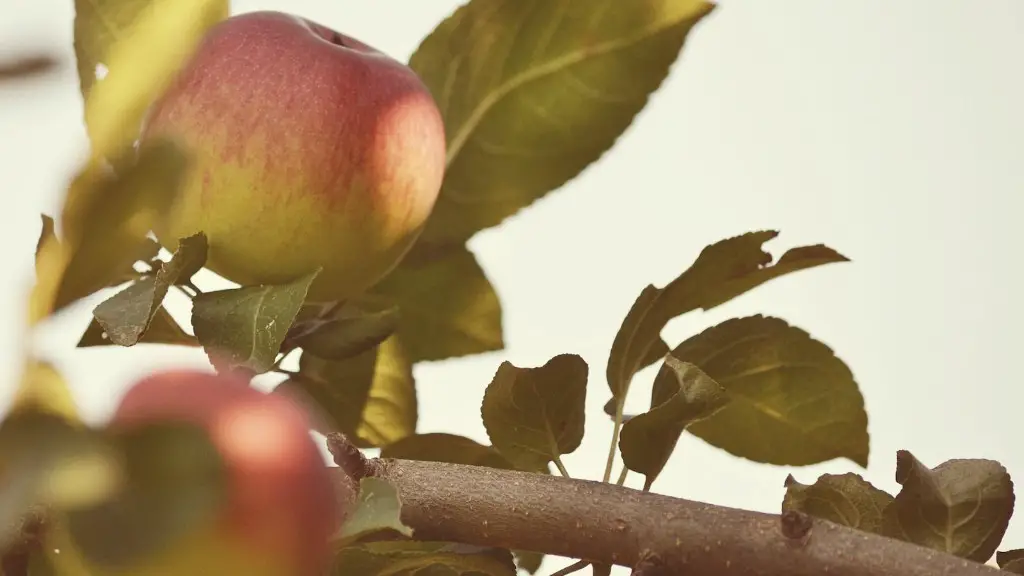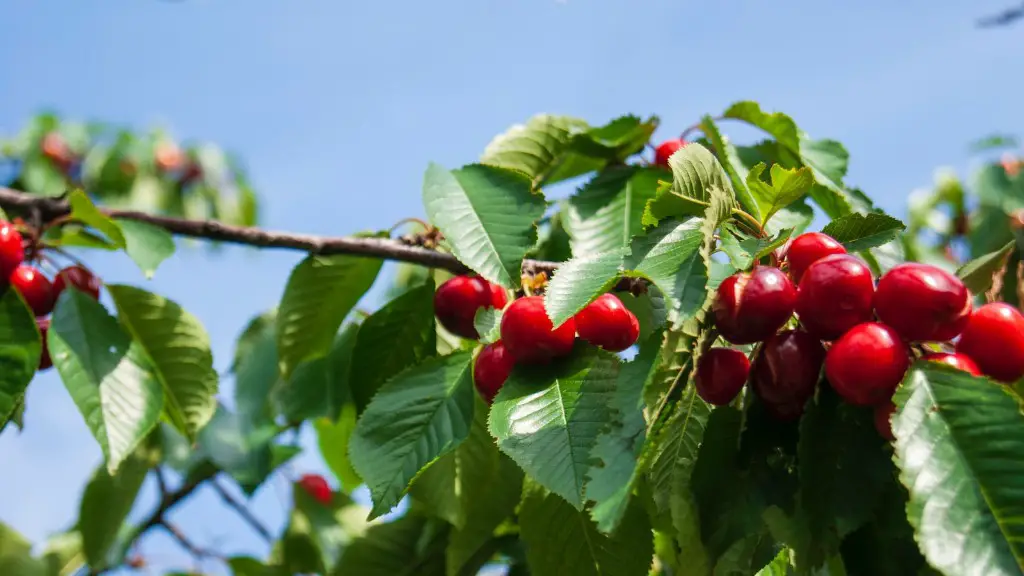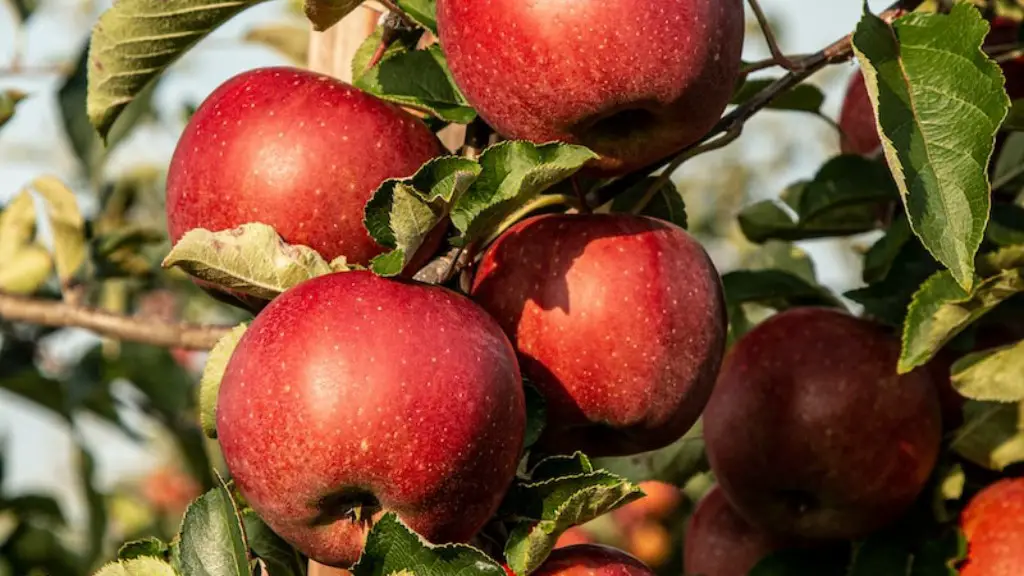When most people think of apple trees, they envision the red and green apples that are found in grocery stores. However, there are many different kinds of apples, and each type has its own unique flavor. The McIntosh apple is a type of apple that is known for its tart taste. If you are looking for a tree that will produce juicy, delicious apples, then the McIntosh apple tree is a great choice.
The best time to plant a mcintosh apple tree is in the spring, after the last frost. Choose a location that gets plenty of sunlight and has well-drained soil. Dig a hole that is twice the width and depth of the tree’s root ball. Add some compost to the hole and mix it in with the native soil. Gently remove the tree from its container and place it in the hole. Backfill the hole with the soil mixture, tamping it down as you go. Water the tree deeply.
How long does it take for a McIntosh Apple tree to bear fruit?
McIntosh is a good pollinator for other varieties. It begins to fruit in 2 years. Pollination: Partly self-fruitful, biggest crops are with Red Delicious, Gala, or Fuji to name a few.
The McIntosh is a type of apple that needs cross-pollination from another apple tree in order to produce fruit. The tree that it is pollinated by should be a different variety of Malus domestica, and bees are the main carriers of pollen from one tree to another.
How far apart to plant McIntosh apple trees
When planting apple trees, it is important to consider the spacing between them. Seedlings or full-size trees should be planted about 15 to 18 feet apart in a row. A dwarfing rootstock might be 4 to 8 feet apart in a row. Of course, apple trees require cross-pollination; a different cultivar that blooms at the same time must be planted within 2,000 feet (preferably, nearer).
If you’re looking for a cold-hardy apple tree to grow in a northern climate, McIntosh is a great option. These trees are also relatively easy to care for, so they’re a good choice for home gardeners in cold weather regions.
What is the easiest apple tree to grow?
Fuji apples are a great choice for a backyard apple tree! They are easy to grow and produce sizeable fruit. They are also sweet and juicy with a crisp bite. Although Fuji apples brown easily, they have a long shelf life compared to other varieties.
It is important to remove any young fruit that form in the first year after planting, as the tree needs to concentrate on establishment and crown development at this stage. In the second year, if the tree is establishing and growing well, you may let one or two fruit develop.
Will two McIntosh apple trees pollinate each other?
If you’re looking to grow McIntosh apple trees, you’ll need to plant another variety as well to achieve fruiting. Some suggested pollinators to pair it with include Honeycrisp, Fuji, and Golden Delicious.
McIntosh apples are a versatile type of apple that is good for both eating and cooking. They are well known for their dessert capabilities and their short cook time. These apples are sweet, juicy, and tart with a bit of spice to the flavor when picked.
What are the benefits of McIntosh apples
McIntosh apples are a good source of fiber to regulate the digestive tract, vitamin C to strengthen the immune system, and potassium to balance fluid levels within the body. All of these nutrients are important for maintaining good health, and McIntosh apples are a great way to get them into your diet.
When choosing to plant an apple tree, it is important to consider the climate of the area. In cold northern climates, spring is typically the best time to plant. However, in areas where winter is not as severe, early spring or late fall planting may be recommended.
When planting apple trees do you need 2?
Apples are self-unfruitful, meaning that they need to cross-pollinate with another apple variety in order to produce fruit. Plant at least two different apple tree varieties within 50 feet of one another for a good fruit set. Some apple varieties, such as Golden Delicious, will produce a crop without cross-pollination from a second variety.
Apple trees require full sun in order to produce a large quantity of fruit. If you want your apple tree to produce a large quantity of fruit, you will need to ensure that it receives at least six to eight hours of sunlight each day during the growing season. Additionally, the tree will need a well-drained, fertile soil in order to thrive.
Do apples need a lot of water to grow
Apples require a lot of water during the growing season, so it’s important to make sure they’re getting enough water from an irrigation ditch or well. The correct volume and frequency of irrigation is important to the overall health of the trees.
The Honeycrisp apple is known for its crisp, juicy flesh and sweet-tart flavor. Honeycrisp apples are a good substitute for Mcintosh apples in recipes that call for Mcintosh apples. Honeycrisp apples have a similar taste and texture to Mcintosh apples, but they are generally crisper and more flavorful.
Why are there no McIntosh apples in the stores?
The McIntosh tree was an important part of the history of the United States. It was a symbol of the country’s strength and resilience. The tree was damaged in a fire in 1894, but it continued to produce fruit until 1908. It finally died and fell over in 1910.
While the sugar levels in a Fuji apple are higher than average, keep in mind that apples are mostly made up of water. Therefore, a Fuji apple is still a good choice for a sweet snack.
Warp Up
To plant a McIntosh apple tree, first dig a hole that is twice the width and depth of the tree’s root ball. Next, remove the tree from its container and loosen any encircling roots. Set the tree in the hole so that the roots are spread out evenly. Backfill the hole with soil, tamping it down gently as you go. Water the tree deeply and mulch around the base of the tree.
When planting your mcintosh apple tree, be sure to choose a location that gets plenty of sunlight and has well-drained soil. Be sure to dig a hole that is twice the size of the tree’s root ball and remove any weeds or grass from the area. When you’re ready to plant, simply backfill the hole with soil and water deeply.





